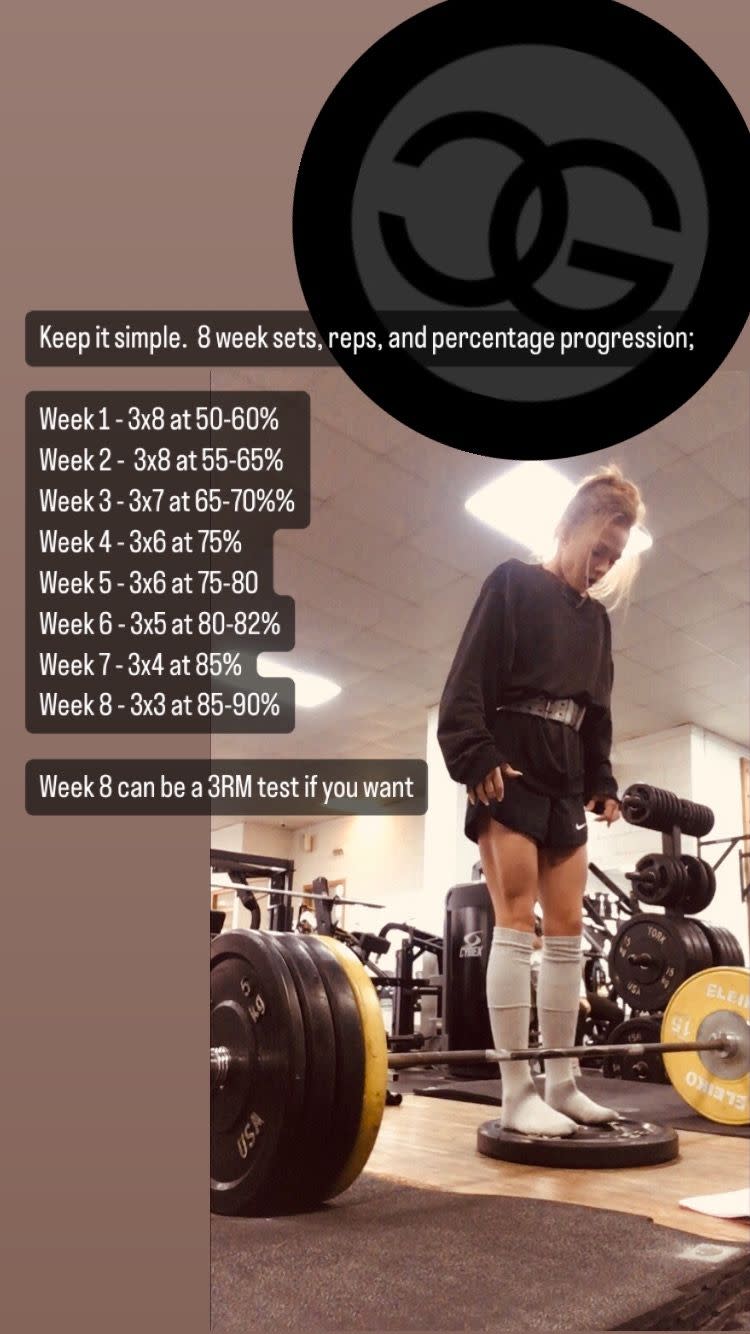Periodization… A Beginners Overview



In order for one to elicit the maximal performance outcome from a strength and conditioning programme one must focus initially on the manipulation of differing training stressors along with the subsumption of varying imposed demands on an athlete… thus, (hopefully) resulting in the appropriate adaptive response necessary. Incorrect manipulation will lead to an increased potential for performance plateaus, injury and/or overtraining. The framework for training management and reforms stems from the following 5 training variables; (no doubt there will be many a folk of whom will choose to argue with these based on various justifications, however, for now these suffice) volume, intensity, frequency, mode and exercise selection. The application of these in accordance with the athletes needs* for the sport requirement will ultimately define success or failure.
*allowing for the preparatory, competition, and transition periods to all be programmed in accordingly; along with the subdivision into meso-cycles with specific phases of development, e.g. hypertrophy/strength endurance, basic strength, or strength/power.
Underpinning all of the above is our focal point...periodization. A theoretical and practical notion that permits the logical, methodical, and all-encompassing programming of a vast spectrum of training interventions into desirable symbiotic periods of time leading to our aforementioned adaptive response. A very wise man, (Mr Charles Large BSc) more succinctly defined it to me once upon a time as, ‘the process in which we organise a training cycle in order to optimise and reach peak performance for a certain event’.
As defined by the NSCA in their, ‘Essentials of Strength and Conditioning’; ‘Periodization of training begins with general global training targets set forth in the multiyear or annual training plan and becomes more specific as the program is developed for the macro-, meso- and microcycles. For example, annual training plans set the general pathway for a training year, while the other cycles set the means, methods and modes used to get to the primary competitive targets’. This highlights that there might likely be more to it than just exuberantly busting in and picking up some heavy stuff when prepping for true performance goals…who knew coaches actually might have a brain and require the implementation of complex intellectual concepts… mind boggling.
Periodzation Cycles
To elaborate on the above concepts;
-multiyear plan; 2-4 years. Also defined as a quadrennial plan, (imaginative, you must admit)
-annual training plan; (again as the name suggests) 1 year. Potentially containing single, or multiple macrocycles. The annual training plan is subdivided into various periods of training encompassing; preparatory, competitive and transition phases.
-macrocycle; several months to 1 year in duration. In essence is interchangeable with that of the annual training plan.
-mesocycle; 2-6 weeks. Also distinguishable by it’s fellow name of a block of training of which is composed of a conglomerate of microcycles.
-microcycle; several days to 2 weeks. Thus outlining how your multiple workouts are conjoined together to work cohesively.
-training day; designed with the consideration of one’s microcycle aims.
Ways of Periodizing;
So, we have covered the basics of how one would endeavour to comprehend the concept of periodization, which is all well and good, however now we must be able to implement this brainchild and, with any luck, stumble upon a performance improvement at the end. I have outlined some of the more common methods by which many a coach abide by and/or interpret uniquely.
-Linear. Increases in intensity, decreases in volume. Refers to the process of sticking to one type/style of training for a defined, pre-determined period of time before then changing the routine.
-Block. Similar to the above, with each training means being sub-divided into specific time blocks with the corresponding methods applied accordingly.
-Step cycle. Increase weight each weight. For example; wk 1; 5x5 80% wk2; 5x5 85%. Wk 3; 5x5 87%... get stuck. So wk 4 5x5 87% then move up... you get the jist. I’m attempting to make some fairly complex theoretical constructs much more manageable for the general reader… I fear I may be somewhat belittling the extensive research behind them… I shall leave you to each come to your own conclusions.
-Structural functional. Increases volume and intensity at the same time or 1 at a time. For example, intro, volumisation, intensification, adaptation. Generally accepted that one works in cycles of 2 blocks max before complete spontaneous combustion of the athlete upon which it has been subjected onto…no doubt there is a troop of rogues out there who defy this caution…
-Wave cycles. An example simply suffices; 75, 80, 85...80, 85, 90% 3 up, 1 down. One can generally find that, with some general caressing and encouragement, it is possible to, ‘eek out’ 3 blocks as opposed to the above 2, however beyond this is a heinous infliction of training barbarity, (and notably counterproductive to the results that one is trying to obtain).
-Undulating. Has shown particularly illusive results in respect to maximal strength gains. An example once again illustrates the premise most clearly. For example; Increase intensity and volume in one aspect of training, decrease in the other. Within that aspect, increase intensity and decrease volume...switch them as you go, such as; 6x6 6x2 5x4. The specific reference to an athletes overall maximal strength gains does bring me onto an important factor, CONSIDER 'K' VALUE OF ATHLETES WEIGHT TO THEIR TONNAGE LIFTING ABILITY AND CARRY OVER... remains imperative as it is this value that can help to indicate both under and over stimulation of an athlete’s individual capacities. The bastard must be squatting enough to make them work and whinge, but not enough that they’re dropping them all… opprobrious, disheartening and ouchies.
-Conjugate. (queue mortifying flashbacks to GCSE Spanish verbs…) In essence we stumble across the following options… Strength days then speed days. Max effort lower, max effort upper, dynamic effort lower, dynamic upper. Different exercise each week, can't reintroduce the same exercise until 6 weeks later. Capiche.

